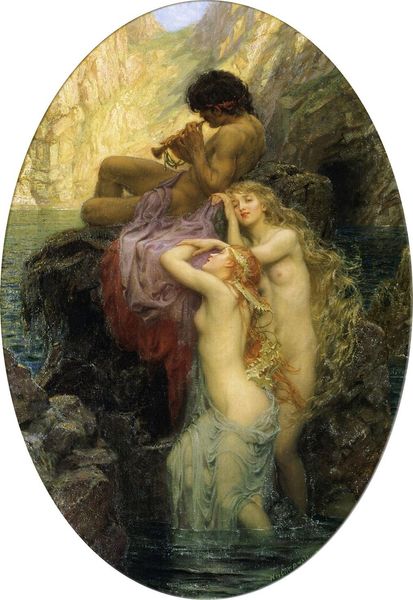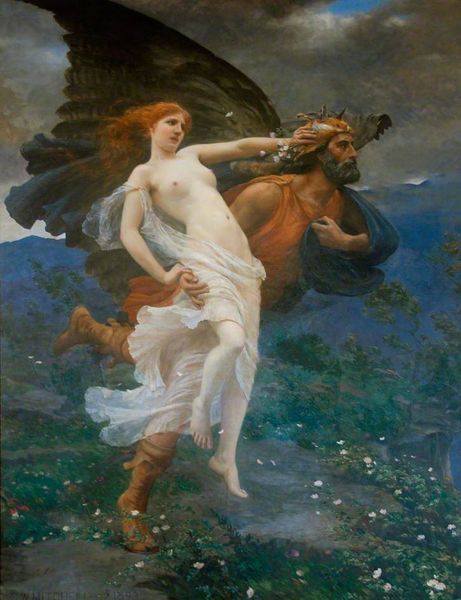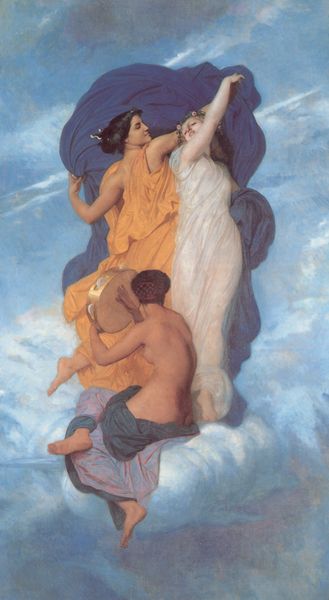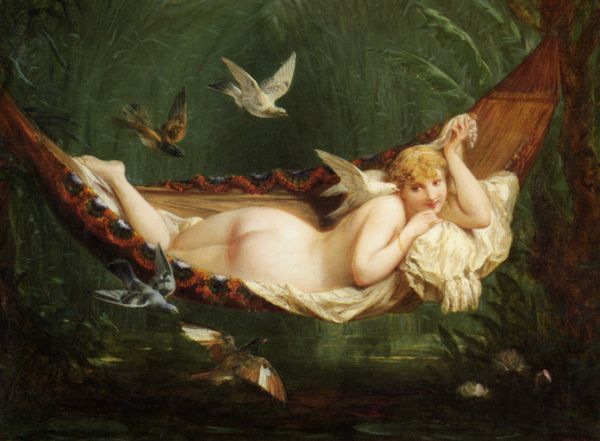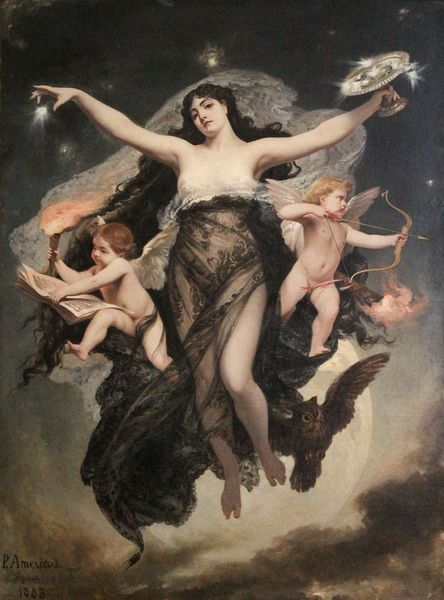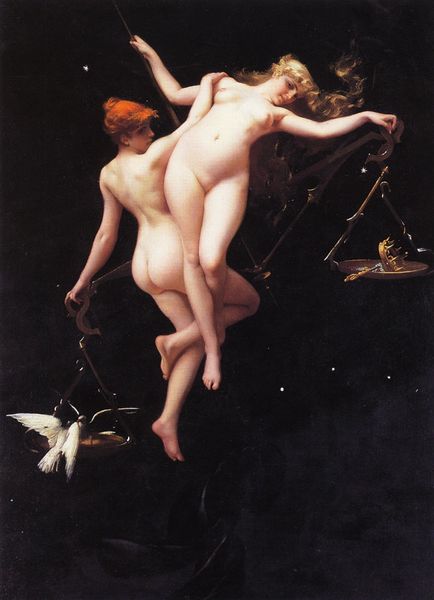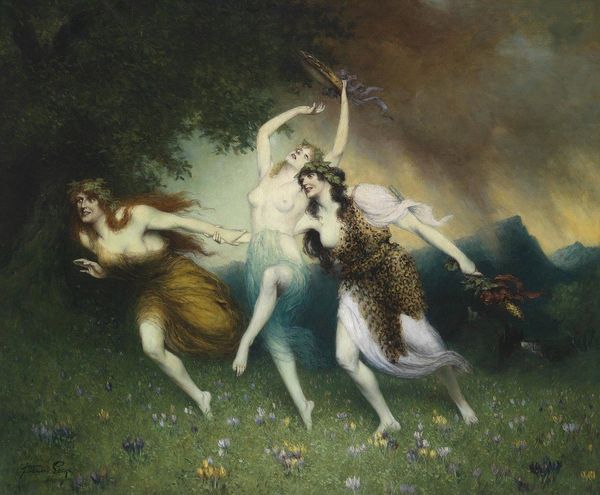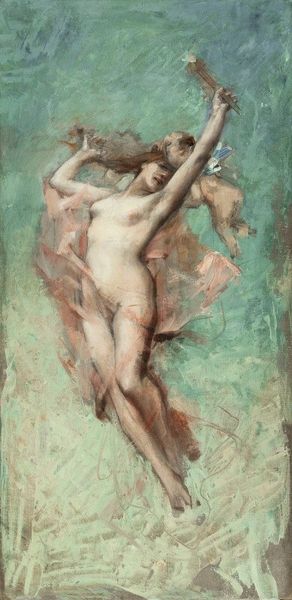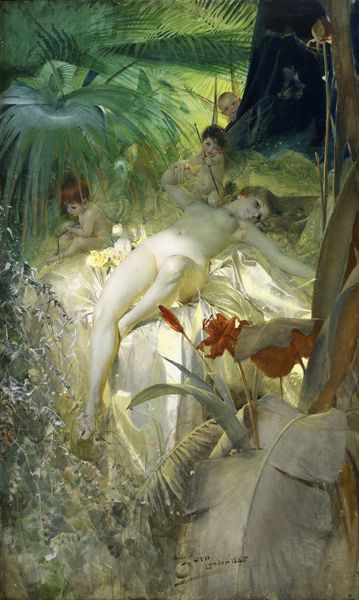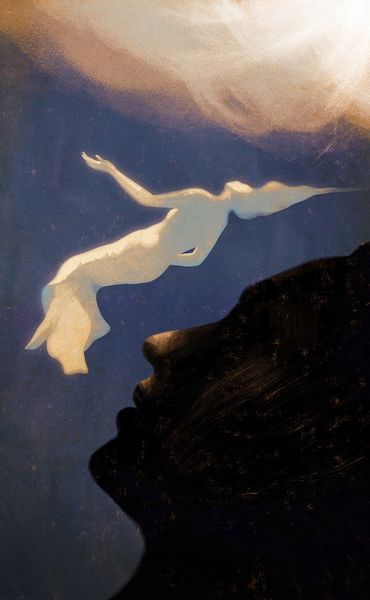
Copyright: Public domain
Curator: This oil painting by Luc-Olivier Merson, titled "An ethereal beauty with putti in the clouds," was completed in 1885, and it's simply awash in Romantic sensibility. What catches your eye? Editor: Immediately, the languid figure dominating the center—she projects a kind of dreamy vulnerability. The cherubs around her evoke a childlike innocence, like she's protected in some kind of divine dreamscape. Curator: Merson was a celebrated academic painter. It is tempting to see this work as an interesting study in allegory in line with his well-known work “Rest on the Flight into Egypt”. There is perhaps an interplay of innocence, beauty, vulnerability... I can not help but wonder to which figure or social commentary this is meant to represent or provoke. Editor: Absolutely. Consider the symbolism of the cherubs. In Western art, they're usually tied to notions of love, innocence, sometimes even death or mourning. And this woman isn't just reposing; she’s shrouded by what appears to be a dramatic dark cloth or cloak. Is she awakening to the earthly plane, shedding that which covers her? Curator: Precisely! Merson painted this in a period where Academic art was being challenged. We have the impression of him negotiating the demands of representing the female form within these institutional structures and also the stirrings of the Symbolist movement towards dream-like subjectivities. The artwork becomes an interesting conversation between traditions and the shift toward modernism. Editor: Yes, there's an almost photographic realism to the nude figure’s skin tones and details, countered by the fluid, indistinct rendering of the clouds. It creates a sense of otherworldliness, separating her, visually, from reality as we know it. Merson uses visual language that blends very well with the spiritual yearning of the period, while reflecting older symbolist languages. Curator: When contextualizing “An ethereal beauty with putti in the clouds,” you recognize its role as more than just decoration; rather, the oil painting contributes to an ongoing dialogue concerning the place for beauty, tradition, and progress, as well as changing perceptions of women in society. Editor: I am leaving this with a lingering thought on how Merson has embedded archetypal symbology, creating an image that whispers of hope, or, at least, an idyllic refuge within a storm.
Comments
No comments
Be the first to comment and join the conversation on the ultimate creative platform.

